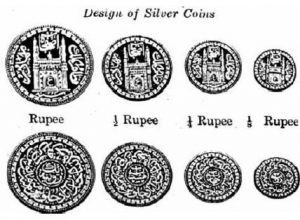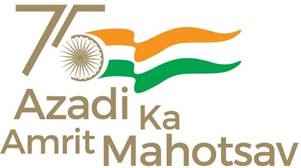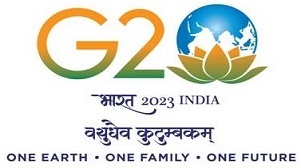हमारे बारे में
- प्रोफ़ाइल
- संगठन संरचना
- इतिहास
प्रोफ़ाइल
भारत सरकार टकसाल, हैदराबाद ('आईजीएम हैदराबाद), सुरक्षा मुद्रण की एक इकाई और मिंटिंग कॉरपोरेशन ऑफ इंडिया लिमिटेड ('एसपीएमसीआईएल') चार टकसालों में से एक है जो है के लिए भारतीय रिजर्व बैंक को सिक्कों के निर्माण और आपूर्ति में लगे हुए हैं संचलन का उद्देश्य। यह एक आईएसओ 9001:2015 और आईएसओ 14001:2004 प्रमाणित इकाई है।
वर्तमान टकसाल, 1997 में चेरलापल्ली में शुरू हुआ, आधुनिक मशीनरी से लैस है दुनिया के प्रमुख ओईएम द्वारा आपूर्ति की जाती है। आईजीएम हैदराबाद 10 रुपये, 5 रुपये के सिक्के बनाती है। रु. 2 और 1 रुपये मूल्यवर्ग। इसने परिसंचारी सिक्कों के 1,513 मिलियन टुकड़ों का उत्पादन किया वित्तीय वर्ष 2016-17 के दौरान।
आईजीएम हैदराबाद सिक्का उत्पादन के लिए एंड-टू-एंड प्रक्रियाओं में लगा हुआ है - पिघलने, रोलिंग, ब्लैंकिंग, एनीलिंग, अचार बनाना और पॉलिश करना और स्टैम्पिंग करना।
वित्तीय वर्ष 2016-17 में इकाई का कुल कारोबार रु. 566.88 करोड़।
संगठन संरचना
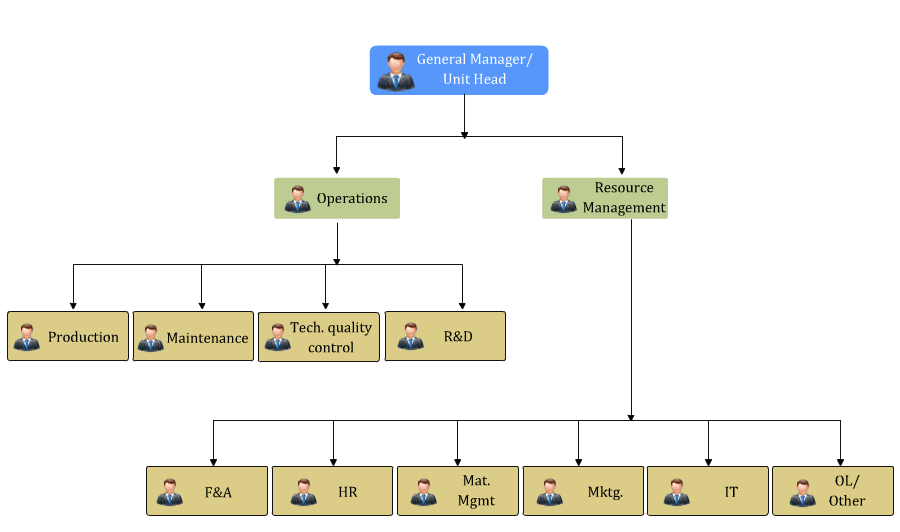
इतिहास
भारत सरकार टकसाल हैदराबाद, भारत सरकार के पूर्ण स्वामित्व वाली केंद्रीय सार्वजनिक क्षेत्र उद्यम (एसपीएमसीआईएल), अनुसूची "ए" मिनी-रत्न श्रेणी- I, सुरक्षा मुद्रण और भारतीय टकसाल निगम की एक इकाई है। टकसाल को मूल रूप से 1803 में हैदराबाद के निजाम के लिए टकसाल के रूप में काम करने के लिए रॉयल टकसाल के रूप में स्थापित किया गया था। 1950 में, टकसाल को भारत सरकार ने अपने कब्जे में ले लिया, और टकसाल का उद्घाटन 28 अगस्त 1997 को चेरलापल्ली में किया गया, जहां 1 नवंबर 2001 को सैफाबाद में टकसाल को पूरी तरह से स्थानांतरित कर दिया गया था, और इसने पूरी तरह से संचालन शुरू कर दिया था।
मिंट हैदराबाद और सिकंदराबाद के जुड़वां शहरों में प्रतिष्ठित संगठनों में से एक है। केंद्रीय लोक निर्माण विभाग और मेकॉन के परामर्श से इस विशाल कार्य को सफलतापूर्वक पूरा किया गया। केंद्रीय औद्योगिक सुरक्षा बल संयंत्र को सुरक्षा निगरानी प्रणाली के साथ सुरक्षा प्रदान कर रहा है।
यह अंतरराष्ट्रीय मानकों की तर्ज पर अत्याधुनिक सुविधाओं से लैस बढ़ती मांग को पूरा करने के लिए 700 मिलियन सिक्कों और 950 मिलियन ब्लैंक्स के उत्पादन के लिए आधुनिक मशीनरी के साथ देश की सबसे आधुनिक खनन इकाई है और यह एशिया की सबसे बड़ी में से एक है। टकसाल में रिफाइनिंग की सुविधा के साथ-साथ टकसाल के सिक्के, पदक और पदक की सुविधा भी है। सुचारू संचालन के लिए कंपनी के पास अच्छी तरह से परिभाषित प्रक्रियाएं और दिशानिर्देश हैं और इसके अधिकारी निर्धारित मानदंडों के भीतर अपने संबंधित कार्यों का निर्वहन करते हैं। इसके अलावा कंपनी के पास सभी महत्वपूर्ण गतिविधियों को कवर करने वाली प्रक्रियात्मक नियमावली है। कार्मिक नियमावली, लेखा नियमावली और आंतरिक लेखा परीक्षा नियमावली, आदि।
यूनिट में सरकार द्वारा सौंपे गए दायित्वों को प्रभावी ढंग से और कुशलता से निर्वहन करने के लिए उत्पादन, नियंत्रण और रखरखाव क्षेत्रों में लगभग 500 की कुल अनुभवी, कुशल और प्रशिक्षित जनशक्ति की बैटरी है। टकसाल की शुरुआत के समय बड़ी संख्या में कर्मियों ने अपेक्षित प्रशिक्षण प्राप्त किया था और जब भी नई मशीनरी को इकाई में जोड़ा जाता है तो कर्मचारियों के कौशल को उपयुक्त प्रशिक्षण प्रदान करके लगातार अद्यतन किया जाता है। यह इकाई अधिकारियों, कर्मचारियों और कामगारों की एक समर्पित टीम होने का दावा कर सकती है, जिन्होंने टकसाल के लिए निर्धारित लक्ष्यों को पूरा करने में सभी टकसालों से आगे खड़े होकर संगठन को गौरवान्वित किया।
यह कैंपस 80 एकड़ जमीन में फैला हुआ है। उच्च सुरक्षा-खनन परिसर के अलावा, इसमें आवश्यक कर्मचारियों (लगभग 100 क्वार्टर) के लिए अच्छी तरह से समर्थित बुनियादी ढांचे के साथ आवासीय परिसर है। फैक्ट्री और कॉलोनी अपनी सभी बुनियादी जरूरतों के लिए लगभग आत्मनिर्भर हैं।
अपने अस्तित्व के 100 से अधिक घटनापूर्ण वर्षों (शताब्दी) के दौरान, मिंट ने कई मील के पत्थर पार किए हैं और हर समय भारतीय रिजर्व बैंक की आवश्यकता और मांग को पूरा करने में एक विश्वसनीय और संभावित टकसाल के रूप में प्रतिष्ठा अर्जित की है। पिछली शताब्दी की शुरुआत तक देश में विभिन्न दारूज़-ज़राब में खनन कार्य किए जाते थे। इन निजी टकसालों का संचालन ओमारा (अमीर आदमी), साहूकार (व्यवसायी) और जागीरदार (गणना) द्वारा किया जाता था। सिक्कों की ढलाई का लाइसेंस प्राप्त करने के लिए उन्हें शाही राजकोष को भारी शुल्क देना पड़ा। वे दिल्ली में सम्राट के नाम से सिक्कों पर प्रहार करते थे, फिर अपने स्वयं के क़िताब (शीर्षक) के शिलालेख के साथ यार-ए-वफ़ादार ट्रस्टेड अनुयायी शब्द के साथ FIDVI जोड़ते थे। एक विशिष्ट उदाहरण यह था कि पेस्टन, मिहरजी, एक बॉम्बे साहूकार जिसे दीवान चंदूलाल ने औरंगाबाद में सिक्कों पर प्रहार करने के लिए लाइसेंस दिया था। ये सिक्के पेस्टन साही सिक्कों के नाम से प्रसिद्ध थे।


पहला शाही टकसाल नवाब सिकंदर जाह के तहत स्थापित किया गया था, आसफ जाही वंश के तीसरे निजाम ने 1803 ईस्वी (1212 फासली, 1218 हिजरी) में हैदराबाद में चारमीनार के मुगलपुरा के पास सुल्तान साही नामक स्थान पर स्थापित किया था। रॉयल मिंट अन्य निजी टकसालों के साथ संचालित होता था, जो पहले उल्लेख किए गए सम्राट के नाम पर सिक्कों का उत्पादन करता था।
हल्ली सिक्का सिक्के 1858 में, अंग्रेजों द्वारा मुगल साम्राज्य के विद्रोह और विघटन के बाद, निजाम जैसे कुछ विशेषाधिकार प्राप्त राज्यों और बॉम्बे और कलकत्ता में भारत सरकार के दो टकसालों को छोड़कर पूरे भारत में सभी टकसालों को समाप्त कर दिया गया था। उसके बाद उत्पादित सिक्कों पर दिल्ली में सम्राट का नाम नहीं रहा। इसके बजाय हैदराबाद रॉयल मिंट के सिक्कों पर निजाम के प्रारंभिक अक्षर के साथ-साथ राजवंश का नाम और अंक 92 अंकित किया गया था। संख्या का धार्मिक महत्व है और भविष्यवक्ताओं के नाम में अक्षरों की प्रतीकात्मक संख्याओं के योग का प्रतिनिधित्व करता है। इन सिक्कों को हल्ली सिक्का के नाम से जाना जाता था जिसका अर्थ है वर्तमान सिक्के। इन सिक्कों का उत्पादन दारुश-शिफा टकसाल में किया गया था और गुणवत्ता कमोबेश पहले के सिक्कों के समान थी।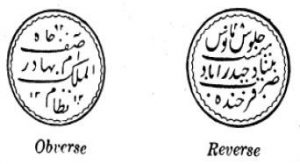
चरखी सिक्के (मतलब मशीन से बने सिक्के) 1895 में, मशीनरी को पहली बार पेश किया गया था और सिक्कों के एक नए वर्ग को चरखी (व्हील) के रूप में जाना जाता था। नीचे चरखी के रुपये के सिक्के की एक प्रतिकृति तैयार की जाती है जिससे यह देखा जाएगा कि 1 रुपया, 8 आना, 4 आना, 2 आना चांदी में और 6 पाई और 2 पाई कांस्य में उत्पादित होते हैं, इसके अलावा, सोने की अशरफी, 1/2 अशरफी, 1/4 अशरफी और 1/8 अशरफी भी उत्पादित की जाती थीं, वे थे, हालाँकि, सामान्य प्रचलन में उपयोग नहीं किया जाता है। बाद में इन सिक्कों को उस्मानिया सिक्का के नाम से जाना जाने लगा, जब 1911 में नए निज़ाम उस्मान अली खान ने सिंहासन ग्रहण किया। ये सिक्के पहली आधुनिक श्रृंखला के सिक्के हैं। उनके विनिर्देश जैसे आकार, मिश्र धातु, वजन बहुत पक्के (विशिष्ट) थे। 1911 में एक मुद्रा अधिनियम भी अधिसूचित किया गया था, जिसमें कानूनी निविदा के रूप में उपयोग के लिए सिक्कों के सटीक विनिर्देश थे। प्रथम विश्व युद्ध (1914-1918) के दौरान चांदी की कीमत काफी बढ़ गई थी और रुपये से कम मूल्य के सभी चांदी के सिक्कों को एक साथ निकल और तांबे के सिक्कों से बदल दिया गया था। कागज मुद्रा अधिनियम 1918 में पेश किया गया था जिसके द्वारा रु। 10, रु. 100 के नोट पेश किए गए। प्रारंभ में इन नोटों को ब्रिटेन में वाटरलू नामक स्थान से मुद्रित और आयात किया गया था। बाद में ये नोट भारत सरकार के मुद्रा नोट प्रेस, नासिक से प्राप्त किए गए थे।
1948 में, हैदराबाद राज्य भारत सरकार के नियंत्रण में आ गया। हैदराबाद की नीना को राजा प्रधान बनाया गया। सैफाबाद टकसाल में अर्द्धशतक के मध्य तक ओमानी सिक्का की ढलाई जारी रही। इसके बाद भारत सरकार ने 1957 में दशमलव सिक्का पेश किया, जल्द ही 1 पैसा, 2 पैसा, 3 पैसा, 5 पैसा, 10 पैसा, 25 पैसा और 50 पैसे का निर्माण शुरू किया गया। प्रशासनिक रूप से, हैदराबाद टकसाल 1948 से 1962 तक बॉम्बे मिंट के नियंत्रण में था, जब तक कि श्री बी.एस. अय्यर ने मास्टर ऑफ मिंट के रूप में हैदराबाद टकसाल का कार्यभार संभाला। तत्पश्चात हैदराबाद टकसाल ने स्वतंत्र रूप से कार्य किया और भारत सरकार, नई दिल्ली के तहत वित्त मंत्रालय, आर्थिक मामलों के विभाग को सीधे रिपोर्ट किया। इन वर्षों में मशीनरी के साथ-साथ सिक्का मिश्र धातुओं में भी कई बदलाव हुए हैं। रात में दूसरी पाली को बढ़ाया उत्पादन में पेश किया गया था। कर्मचारियों और कामगारों की संख्या बढ़कर लगभग 1200 हो गई। उत्पादन प्रति दिन 2.0 मिलियन टुकड़ों को छू गया। प्रारंभ में 50 पैसे तक कम मूल्यवर्ग में मारा गया था